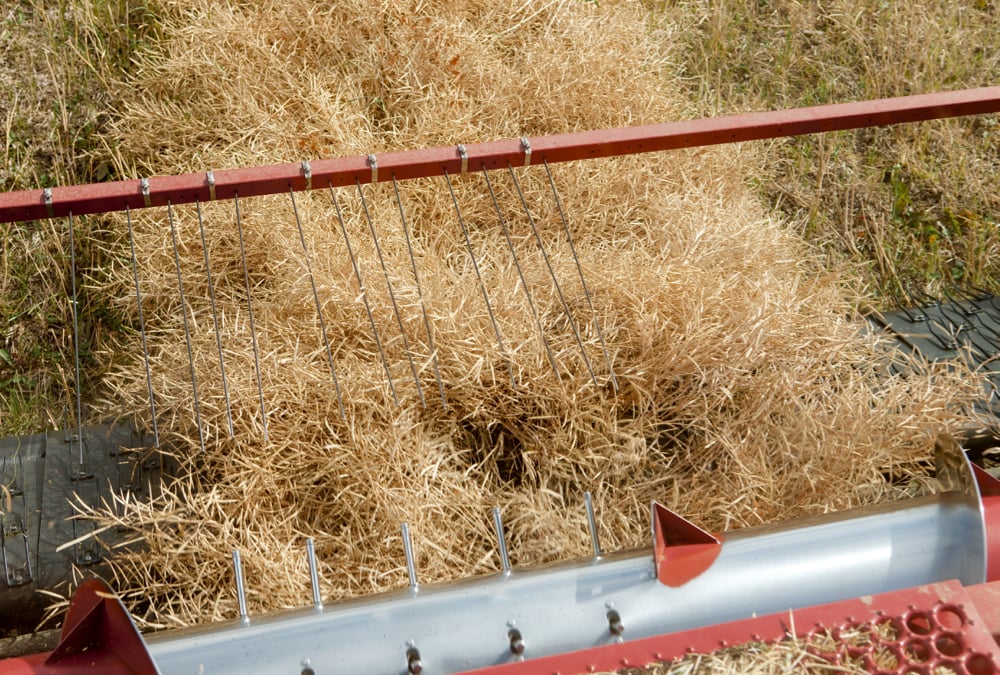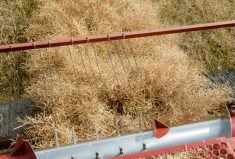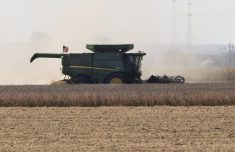Flood water affecting some communities northwest of Saskatoon was beginning to recede or hold stable today, while in other places residents were still fighting to protect their property, provincial officials said in a daily update.
Water levels around Radisson decreased overnight and are stable for the moment, said Water Security Agency spokesperson Patrick Boyle, while levels at Borden were rising a bit.
The tributaries of larger rivers have caused the flooding, and Boyle said that is a sign the runoff is going to come in stages.
Read Also

Alberta harvest wrapping up: report
Harvest operations advanced to 96 per cent complete in Alberta as of Oct. 7, with only a few late-seeded cereal and canola fields remaining, according to the latest provincial crop report.
“As the snow melts and we see these stages, we can see a number of peaks on certain river systems,” he said.
For example, the Moose Jaw River has peaked twice and could do so again.
The most serious flood concerns right now are in the Borden and Radisson areas. They, along with Maidstone, have declared states of emergency.
Two rural municipalities, Great Bend and Elfros, and three First Nations, Poundmaker, Onion Lake and Sakimay, have done the same.
Poundmaker has been most affected so far with about 50 people out of their homes and 13 houses damaged by water. However, Boyle said the flows on Cut Knife Creek that were affecting the First Nation have declined substantially.
On Onion Lake, about 200 people could be evacuated if road access issues become a concern. Sakimay hasn’t had any issues yet but has declared an emergency in order to take measures to mitigate flooding.
In Radisson, the occupants of 50 homes remain on alert for evacuation.
In the Maidstone and Lashburn areas, the flood threat has mainly passed and the communities are moving into clean-up mode, said emergency management commissioner Duane McKay.
Officials were in Asquith, west of Saskatoon, late April 30 to help build barriers to protect two homes from flooding caused by a nearby wetland.
The village of Borden continued to be a focal point for efforts by provincial emergency staff and volunteers. McKay said they are ready if the water gets close to topping the barriers already in place to protect the community.
“We do have additional equipment that can be moved in, as well as large volume pumps that might assist in moving the water away from those barriers,” he said.
A temporary surge in the Prince Alberta area on the North Saskatchewan River was caused by ice jams, but levels are now declining.
McKay said officials are monitoring the area around Duck Lake, Beardy’s and Okemasis First Nation and Rosthern.
The predicted summer-like temperatures for the weekend are cause for concern in more southern regions.
“Obviously we are keeping an eye on the Qu’Appelle chain, which will see flooding from Last Mountain Lake all the way down through to Round Lake,” McKay said.
“It seems to be very stable at the time in terms of the amount of work that’s being done, but there are rising waters and backwaters in that area which we’re monitoring.”
A map of snow cover as of yesterday shows most of the snow in the Regina, Melville and Weyburn areas hasn’t yet melted. The expected rapid melt will affect the waterways in those areas by early next week.

















